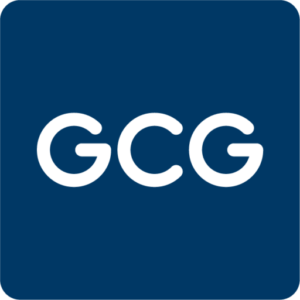
GCG Leadership Development Team
In the world of leadership development, feedback has long been the preferred method of addressing performance issues and fostering improvement. However, a forward-looking approach called “feedforward” is gaining traction as an effective option that focuses on future actions instead of dwelling on past mistakes. Global Coach Group (GCG) recognizes the potential of feedforward and we have incorporated it into our coaching methodology, offering digital coaching tools to support this progressive approach. In this blog, we’ll dive into the concept of feedforward, compare it to traditional feedback, and discover how GCG’s feedforward-focused coaching methodology unlocks the future of organizational growth and development.
Defining Feedforward
Feedforward is a proactive and future-oriented approach to communication that emphasizes improvement by providing suggestions for growth instead of critiquing past actions. Unlike feedback, which focuses on analyzing past performances, feedforward takes a more collaborative and outcome-based approach by pinpointing specific, actionable steps a person can take to improve moving forward.
Understanding the Differences: Feedforward versus Feedback
While both feedforward and feedback seek to improve performance and growth, they differ in several key aspects:
1. Direction
Feedback looks to the past, examining actions and decisions that have already occurred. In contrast, feedforward focuses on the future, identifying opportunities for improvement and offering guidance to achieve those goals.
2. Orientation
Feedback typically carries a more critical tone, addressing what went wrong or what could have been done better and consequently, people can easily take it personally since they were the ones doing it. Feedforward, on the other hand, promotes a more positive outlook by highlighting actionable steps for growth and maintaining a forward-looking perspective and these actions have not happened yet people do not take it personally by default.
3. Collaborative Approach:
Feedback often places the giver in the role of judge or evaluator, which can create a defensive response from the receiver. Conversely, feedforward encourages collaboration and cocreation, with both parties working together to brainstorm ideas geared toward future improvement.
4. Vibrancy
While feedback tends to focus on deficiencies, feedforward energizes and motivates individuals to build on their strengths and explore new pathways to success. This approach fosters a growth mindset, inspiring individuals to continually evolve in pursuit of enhanced performance.
Feedforward requires knowledge of the task at hand but does not require knowledge of the person who will execute the action later. Subsequently, it is much easier for others to share valuable suggestions based on their knowledge or personal experience. They can do this irrespective of the other person who needs to do this action later. Again, that makes the discussion, by default, very collaborative and low hurdle.
The Benefits of Implementing Feedforward in Organizations
Feedforward offers several advantages over traditional feedback that can lead to significant improvements in organizational growth and development:
1. Enhances Engagement
The future-oriented nature of the feedforward approach fosters a positive environment where employees feel supported, involved, and valued. This boost in engagement can lead to increased commitment and productivity.
2. Fosters a Growth Mindset
Feedforward encourages a growth mindset by challenging individuals to explore new strategies for improvement, embrace learning opportunities, and set ambitious goals for personal and professional advancement.
3. Reduces Defensiveness
By focusing on future actions rather than past mistakes, feedforward minimizes defensive reactions that often arise after receiving negative feedback. This shift allows employees to be more receptive to suggestions and committed to implementing changes. In addition, feedforward is much easier for others to share valuable suggestions based on their knowledge or personal experience. They can do this irrespective of the other person who needs to do this action later. Again, that makes the discussion, by default, very collaborative and low hurdle.
4. Encourages Continuous Improvement
Feedforward emphasizes learning from past experiences to shape future actions. This ongoing process of reflection and adaptation promotes continuous improvement and drives long-term success in an ever-changing organizational landscape.
Integrating Feedforward into Organizational Culture
To unlock the benefits of feedforward and create a more dynamic, growth-oriented environment, organizations can adopt the following strategies:
1. Leadership Buy-in
Encourage leaders to embrace feedforward as a valuable development and coaching tool. By modeling the feedforward approach, leaders demonstrate commitment to continuous improvement and nurture an open, supportive environment.
2. Training and Development
Offer training programs that emphasize the importance of feedforward and teach practical skills for integrating this approach into daily interactions, performance evaluations, and team meetings.
3. Communication
Foster a culture of open communication, encouraging employees to share their insights, ideas, and suggestions for improvement in a feedforward-oriented manner. This practice will help to create an environment where growth-focused conversations are the norm.
4. Continuous Reinforcement
Regularly seek opportunities to integrate feedforward into the organizational culture by recognizing and praising those who apply the feedforward approach and share their success stories.
Global Coach Group’s Feedforward-based Coaching Methodology
GCG’s coaching methodology focuses on leadership growth areas and incorporates the feedforward approach by leveraging the power of collective suggestions and insights from coworkers. GCG offers an online leadership coaching platform with resources, tools, and programs to help coaches expand their knowledge and skills. Our digital coaching tools are designed to achieve better measurable results, improve leadership, team, and business performances, and save time. Trusted by leaders in Fortune 500 organizations as well as SMEs, GCG systematically supports the feedforward methodology through its innovative coaching tools.
For leaders who want to become coaches or coaches looking to enhance their leadership coaching skills, Global Coaching Group (GCG) provides a comprehensive leadership coaching certification program. GCG’s internationally acclaimed coaching tools and resources can help you improve your coaching proficiency and empower you to guide others. By pursuing a GCG certification, you can join a prestigious global network of over 4,000 leadership coaches who can support you throughout your journey.

GCG Leadership Development Team
Learn about the GCG's Coaching Tools
Measurable results, in LESS Time.
Reduce your session prep and follow-ups to just 15 minutes, while delivering coaching that improves leadership, team and business performances with 95% coworker satisfaction
